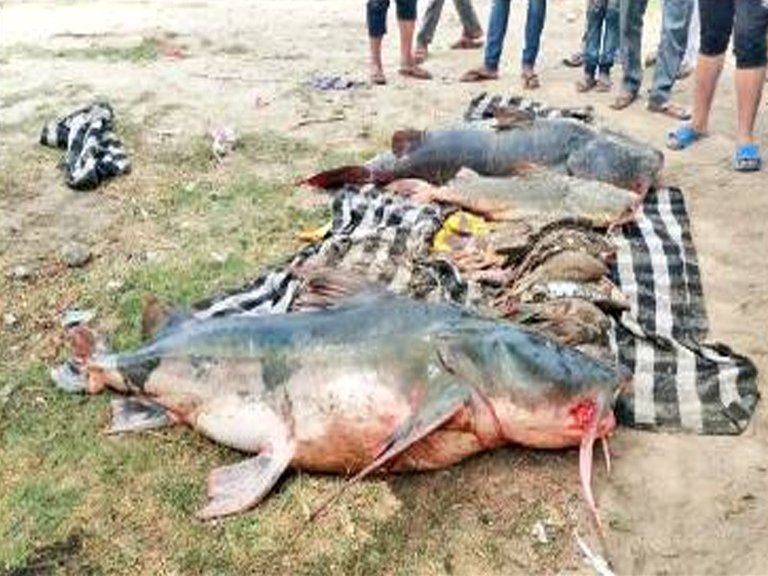
CHANDIGARH: The release of distillery molasses has killed tonnes of fish in the Beas, including the monster catfish dwelling at the river bottom, and threatened the fish prey base of the critically-endangered gharials and endangered Indus dolphins.
“The waters turned reddish brown after the discharge from a distillery-cum-sugar factory complex located at Kiri Afghana, Hargobindpur in Gurdaspur district. Since the stretch of the river falls in the Beas Conservation Reserve, we have booked the factory owners under Sections 32 and 51 of the Wildlife (Protection) Act, 1972, for having discharged injurious substances into the water and the proceedings are underway for trial in a Batala court,” Punjab’s principal chief conservator of forest (PCCF) (Wildlife) Kuldip Kumar told TOI. “The Beas water is also used for drinking by humans and cattle,” he said.
Lamenting the death of the huge river fish, Prof M S Johal, an authority on fisheries, identified the monster fish as a catfish species known as ‘Khagga’ locally and scientifically termed as ‘Rita rita’.
Delving on its ecology, Prof Johal told TOI: “The Khagga can grow to huge sizes but not 200 kg as is being presumed from outward appearance. It is a carnivore fish with small eyes and big mouth and eats other fish. The ‘Khagga’ has a very unbecoming appearance and is therefore not preferred for eating nor cultivated in fish ponds”
“The tragedy is that Punjab has a lot of fish diversity but we get to know of it when such ecological disasters occur. I suspect that with the release of molasses in the river, algae was formed which got deposited on the gills of the fish leading to mortality due to suffocation,” he added.
“Responding to the call to release water to dilute the effects of the factory molasses, the state government has released 2,000 cusecs from the Ranjit Sagar Dam. Already 8,000-9,000 cusecs of water was flowing in the Beas. We have also requested the Pong Dam authorities to release more water and they have a meeting on the issue tomorrow morning,” Punjab Pollution Control Board chairman Kahan Singh Pannu told TOI.
“We have booked the offenders under Section 33 of the Water (Prevention and Control of Pollution) Act, 1974. This factory has been a previous offender in 2011 when it was discharging untreated effluents. We are conducting an inquiry and we hope the dolphin and Gharial will remain safe,” he added.
Hi! I am a robot. I just upvoted you! I found similar content that readers might be interested in:
https://timesofindia.indiatimes.com/city/chandigarh/prey-base-drained-gharials-and-dolphins-under-threat/articleshow/64212914.cms